LYNNWOOD, Wash., August 30, 2021 — The U.S. Census Bureau released additional 2020 Census results, August 12, that will shape the Washington State Redistricting Committee’s once-in-a-decade redrawing of the state’s congressional and state legislative electoral districts.
There are 10 congressional districts and 49 legislative districts in Washington State, a state of 7.6 million people according to the U.S. Census Bureau. Due to population growth, the target populations for each set of electoral districts rose from 137,236 to 157,251 legislatively and 672,454 to 770,528 congressionally since 2010, the last remapping of boundaries.
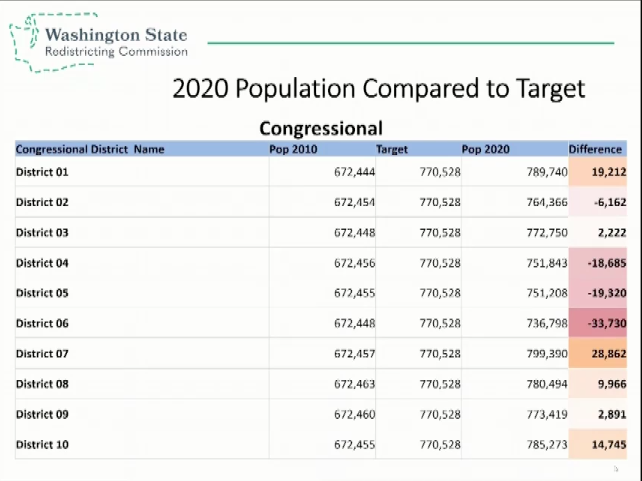
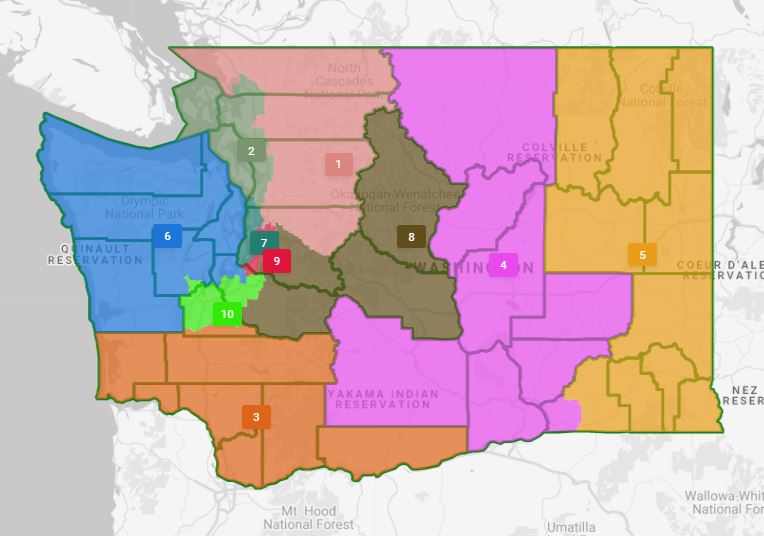
The congressional district that needs to grow the most, based on the census data report, is the sixth district, followed by the fifth and the fourth, respectively. The congressional districts that need to shrink the most are the seventh and the first. These results are based upon the current population of the districts in relation to a target population of 770,528 per district.
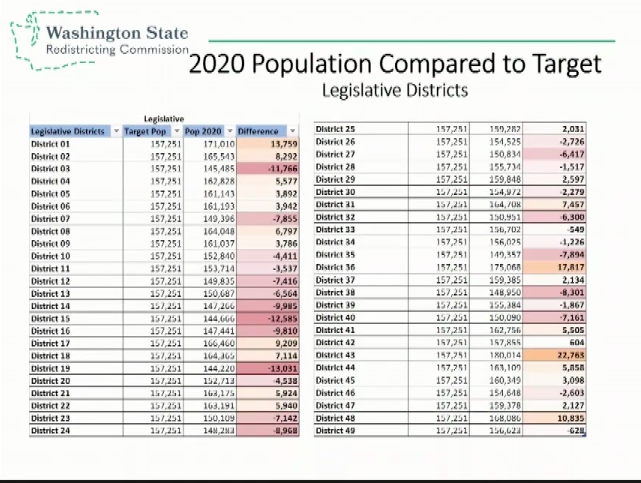
Based on a target population of 157,251, the legislative districts that need to grow the most are the 19th and the 24th, in the Olympic Peninsula, and the 14th, 15th, 16th, and 3rd in the Spokane area. Puget Sound’s 43rd, the 46th, and the 48th districts are the districts that need to shrink the most, analyzed Lisa McLean, Executive Director for the Washington State Redistricting Committee, at the business meeting on August 16.
Four days after the Census Bureau’s updated report, the commission held a business meeting, August 16, to analyze the data and how it should affect the boundaries of the state’s congressional and legislative mapping.
Beginning September 21, draft legislative maps will be released and on September 28, four draft congressional maps will be released, one per commissioner. These maps will be available for public comment until November 15. The commission not only welcomes public comment on these drafts but encourages the public to use a mapping tool that communicates to the commissioners about the boundaries of certain communities of interest and comment on the existing legislative and congressional districts.
Communities of Interest are used to help stakeholders understand local interests in preserving areas within a district. A Community of Interest can be a subdivision, a city, a neighborhood, or any geographic area defined and submitted for consideration.
Although the deadline for public comments and Community of Interest submissions closes November 15, the commission has decided to keep the mapping tool accessible on its website to allow Social Studies teachers and parents to teach their children about electoral boundaries.
Washington State Redistricting Commission
Every 10 years, after the federal government publishes updated census information, Washington redraws the boundaries of these districts to ensure they represent an equal number of residents. A bipartisan Washington State Redistricting Commission is established for this purpose, consisting of four voting members — two Democrats and two Republicans — selected by the leaders of the Democratic and Republican caucuses in the state House and Senate. A fifth nonvoting chairperson is then picked by the voting members.
The four commissioners appointed are April Sims (D), Paul Graves (R), Brady Piñero Walkinshaw (D), and Joe Fain (R), with Sarah Augustine chairing without a vote.
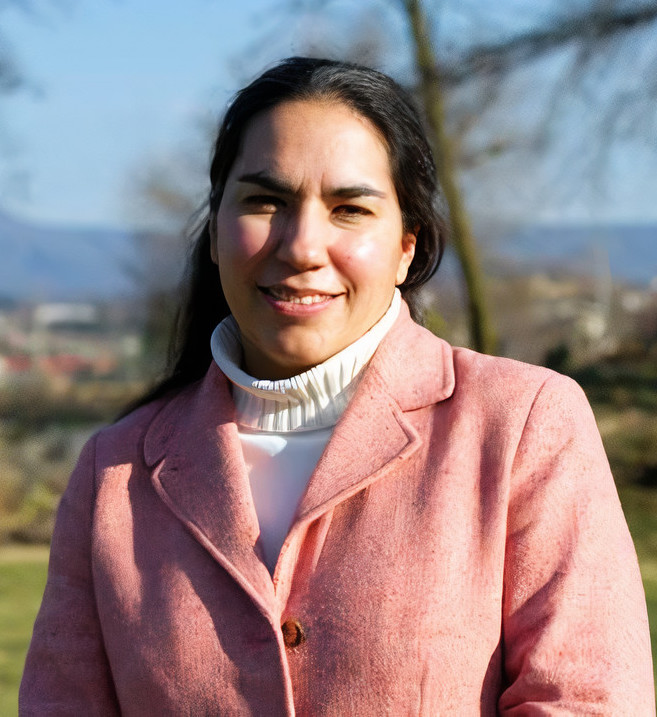
Sarah Augustine 
Paul Graves 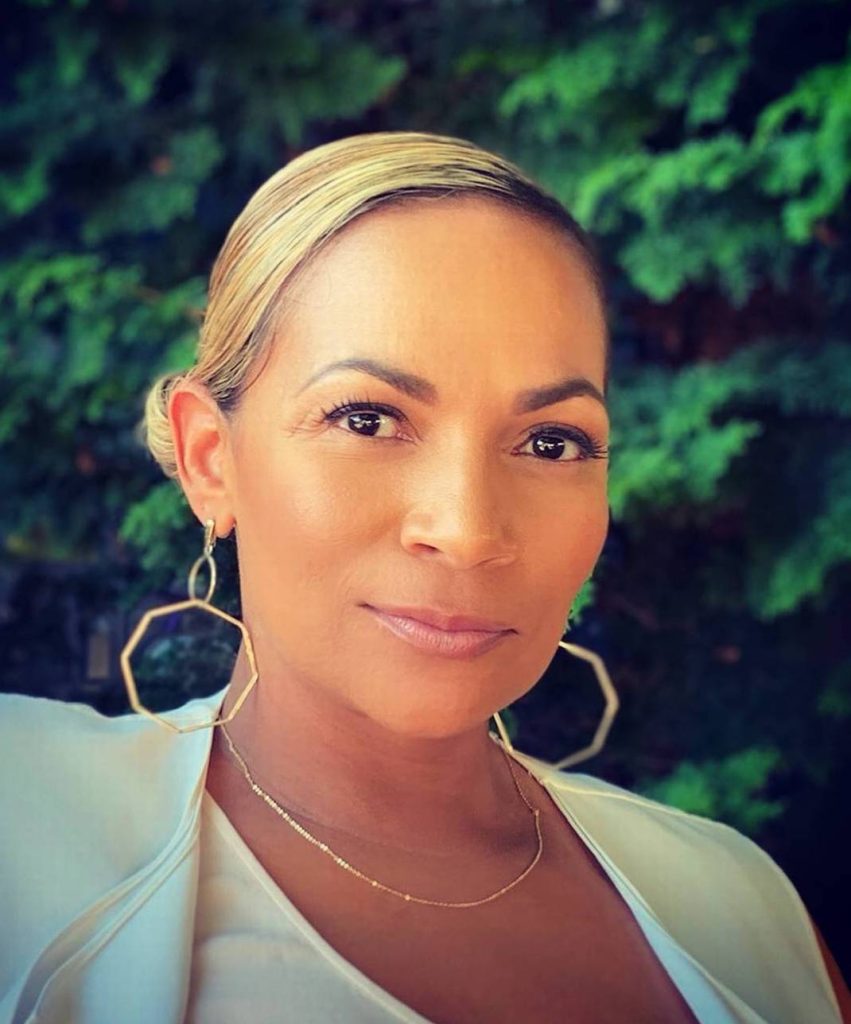
April Sims

Brady Walkinshaw 
Joe Fain
It is the commission’s role to draw the district lines in conformity with strict, nonpartisan rules designed to create districts of relatively equal population that will provide fair representation for all Washingtonians.
The four voting commissioners have the power and responsibility to vote, ultimately creating and adopting a redistricting plan. Voting commissioners will make decisions that will create maps that best represent the interest of Washingtonians.
The mandate of the commission, set out in the Washington State Redistricting Act, is to accomplish state legislative and congressional districting in accordance with the Washington State Constitution. The bipartisan commission was created to listen to the public every ten years so that the district would be run by statute and by public input.
The Constitution of the United States allows each state to determine its own processes for redistricting within certain bounds. Washington is one of only seven states that redistricts by commission and has since 1890.
The Committee will meet again Monday, September 20, to discuss map drafts before releasing them to the public for comment.
Author: Kienan Briscoe









